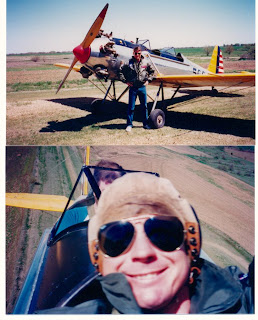
27 June, 2007
Where's Dad ?

HRDLICKA, DAVID LOUIS
Name:
David Louis Hrdlicka
Rank/Branch:
Lieutenant Colonel/US Air Force
Unit:
563rd Tactical Fighter Squadron Takhli Airbase, Thailand
Date of Birth:
30 December 1931
Home of Record:
Littleton, CO
Date of Loss:
18 May 1965
Country of Loss:
Laos
Loss Coordinates:
202240N 1041250E (VH160480) Click coordinates to view maps
Status in 1973:
Prisoner of War
Category:
1
Aircraft/Vehicle/Ground:
F105D "Thunderchief"
Other Personnel in Incident:
(none missing)
REMARKS:
SYNOPSIS: The principle Air Force tactical strike aircraft during the Vietnam War was the single-seat Republic F105 Thunderchief, nicknamed a "Thud." Mass-produced after the Korean War, it served throughout Southeast Asia, particularly during Rolling Thunder operations.
On May 18, 1965, then Capt. David L. Hrdlicka was the pilot of the lead F105D, call sign "Plymouth 41," in a flight of four conducting an early morning interdiction/strike mission. Their intended target was a road heavily used by the communists to transport troops and supplies through the region. The briefed flight path was from Takhli Airfield to the target and back to Takhli. When Plymouth flight arrived in the target area, they found it was obscured by clouds. The flight circled for 15 to 20 minutes until the clouds went by allowing the pilots to visually recognize the target.
Weather conditions in the target area consisted of scattered clouds at 5,000 feet, broken clouds at 8,000 feet, another layer of broken clouds at 12,000 feet, and overcast at 20,000 feet. Visibility was 10 miles and the winds were calm.
At 0850 hours, Capt. Hrdlicka made his attack run from west to east and parallel to the road with a 30-degree dive angle. As his bombs hit the road, his wingman watched as the flight leader pulled out of his dive toward the south. The wingman commenced his own bomb run. As he pulled off target, he heard David Hrdlicka radio that he had a fire warning light. The pilot of #2 confirmed that lead's aircraft was on fire. At that time Capt. Hrdlicka continued to the south as he climbed his crippled jet to an altitude of 10,000 feet before ejecting.
The other pilots in Plymouth flight saw David Hrdlicka eject and his parachute fully deploy. He landed uninjured in a small valley nestled in the populated, forested mountains laced with primary and secondary roads located approximately 1 mile north of Muong Yong and the target road, 9 miles southeast of a major cave complex, 11 miles southeast of Sam Neua City and 15 miles southwest of the Lao/North Vietnamese border, Sam Neua Province, Laos. This valley was also 110 miles west-northwest of Thanh Hoa and 116 miles southwest of Hanoi, North Vietnam.
None of the other fight members saw him move, or try to remove the chute. After 15 minutes, villagers were seen rolling up the chute and appeared to be taking or assisting the pilot to the village. The villagers did not appear to be armed. The other flight members reported light flak in the target area as well as in the valley where Capt. Hrdlicka landed making their ability to provide rescue air cover very difficult.
According to the Air Rescue after action report from the search and rescue (SAR) personnel: "The pilot was observed to be accompanied by other persons on the ground proceeding to a Lao village near the bailout point. Friendly helicopters transported indigenous personnel to the vicinity of the village. They were informed the downed pilot had been taken by the Pathet Lao." At the time formal SAR efforts were terminated, David Hrdlicka was listed Prisoner of War.
Wartime reports from Pathet Lao defectors placed Capt. Hrdlicka in a cave in the Vieng Xai area of Sam Neua Province through at least 1966. Further, from the time of his capture, and for years afterward, US intelligence tracked David Hrdlicka through various cave complexes in the vicinity of Ban Nakay Teu and Ban Nakay Neua also located in northern Laos. Capt. Hrdlicka and other POWs were also seen and photographed by US spotter teams while being held in these caves. Some times he was alone, other times David Hrdlicka was being held with other well-documented POWs including Charles Shelton. In Capt. Hrdlicka's case, he was photographed in captivity as late as 1969 by US intelligence/surveillance teams.
The cave complex region of northern Laos in Sam Neua Province is extensive. It is also considered to be the birthplace of the communist Pathet Lao. The caves housed the Pathet Lao government, its military units, support elements, as well as facilities for American prisoners all of which rivaled a small city. The number of Americans held in these caves, hidden from surveillance, has been estimated by some US intelligence personnel to be in the hundreds. Further, during the "Secret War" waged in Laos, American spotter teams frequently photographed US POWs held in these caves.
On 22 July 1966, the North Vietnamese newspaper, Quan Nhan Dan featured a story about Capt. Hrdlicka's capture. Four days later, on 26 July, a tape recorded broadcast was made by Capt. Hrdlicka in which he read from a personal letter reportedly written by him and addressed to Prince Souphanouvang. In this broadcast, David Hrdlicka expressed his eagerness to see his wife and children. Radio Peking also broadcast a statement quoting Lao sources stating that David Hrdlicka was their prisoner.
In August 1966, the Russian news service, PRAVDA, ran a photograph of Capt. Hrdlicka, still in his flight suit, head bowed, and an armed Pathet Lao guard behind him. Additional photos of him in captivity were received from several sources, all of them depicting an uninjured and a very much alive.
On 25 September 1982, a delegation comprised of POW/MIA family members from the National League of Families were in Southeast Asia. While in Vientiane, they met with Colonel Khamla, a Lao security official; who told them that David Hrdlicka died in 1968 of natural causes exacerbated by malnutrition while imprisoned in a cave in Sam Neua. Colonel Khamla stated he was buried nearby, but his grave was destroyed by US bombing. The Joint Task Force for Full Accounting (JTFFA) investigated Capt. Hrdlicka's purported gravesite in April 1992. The team interviewed witnesses, and they described his burial in 1968. However, when the burial site was excavated, no remains were found.
In February 1988, the Lao passed photocopied personal documents belonging to Capt. Hrdlicka to the US. In September 1989, a private citizen visiting Laos was also provided a photocopy of a document that apparently belonged to him. Furthermore, a photo of Capt. Hrdlicka after capture is also on display in the Lao museum.
David L. Hrdlicka is one of nearly 600 Americans who disappeared in Laos. Many of these men were known to be alive on the ground. The Laotians admitted holding "tens of tens" of American Prisoners of War, but these men were never negotiated for either by direct negotiation between our countries or through the Paris Peace Accords which ended the War in Vietnam since Laos was not a party to that agreement.
There is no question that David Hrdlicka was alive in enemy hands since he was such an extremely well documented Prisoner of War over a long period of time. If the reports of his death are accurate, he has a right to have his remains returned to his family, friends and country. If, on the other hand, the reports of his death were greatly exaggerated; his fate, like that of other Americans who remain unaccounted for, could be quite different.
Since the end of the Vietnam War well over 21,000 reports of American prisoners, missing and otherwise unaccounted for have been received by our government. Many of these reports document LIVE America Prisoners of War remaining captive throughout Southeast Asia TODAY.
Pilots and aircrews were called upon to fly and fight in many dangerous circumstances, and they were prepared to be wounded, killed or captured. It probably never occurred to them that they could be abandoned by the country they so proudly served.
26 June, 2007
20 June, 2007
Subscribe to:
Comments (Atom)















































